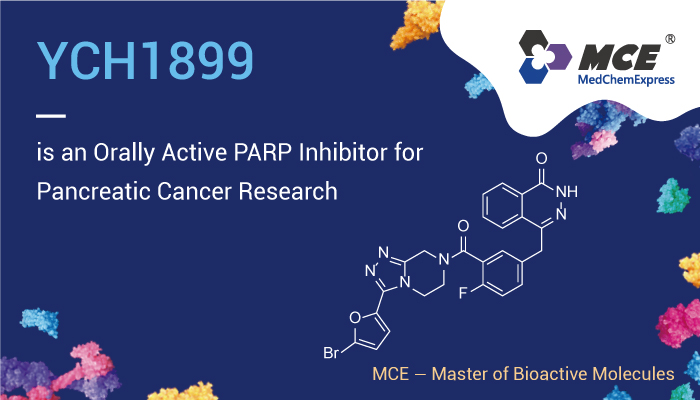Poly (ADP-ribose) polymerases (PARPs) are a family of related enzymes that share the ability to catalyze the transfer of ADP-ribose to target proteins. The PARP family comprises 17 members. They have all very different structures and functions in the cell. PARP1, PARP2, VPARP (PARP4), Tankyrase-1 and -2 (PARP-5a or TNKS, and PARP-5b or TNKS2) have a confirmed PARP activity. Others include PARP3, PARP6, TIPARP (or PARP7), PARP8, PARP9, PARP10, PARP11, PARP12, PARP14, PARP15, and PARP16. PARPs play an important role in various cellular processes, including modulation of chromatin structure, transcription, replication, recombination, and DNA repair. The role of PARP proteins in DNA repair is of particular interest, in view of the finding that certain tumors defective in homologous recombination mechanisms, may rely on PARP-mediated DNA repair for survival, and are sensitive to its inhibition.
PARP inhibitors may also increase tumor sensitivity to DNA-damaging agents. The hyperactivation of PARP has also been shown to result in a specific programmed cell death pathway involving NAD+/ATP depletion, mu-calpain activation, loss of mitochondrial membrane potential, and the release of apoptosis inducing factor. Hyperactivation of the PARP pathway may be exploited to selectively kill cancer cells. Other PARP forms, including tankyrase 1 (PARP 5a), which plays an important role in enhancing telomere elongation by telomerase. The PARP pathway and its inhibition thus offers a number of opportunities for therapeutic intervention in both cancer and other disease states.

YCH1899, a phthalazin-1(2 H)-one derivative, is an orally active PARP inhibitor
Compared with Olaparib and Talazoparib, compound YCH1899 exhibited distinct antiproliferation activity against Olaparib- and Talazoparib-resistant cells. Studies of the cellular mechanism revealed that YCH1899 retained sensitivity in drug-resistant cells with BRCA1/2 restoration or 53BP1 loss. Furthermore, YCH1899 had acceptable pharmacokinetic properties in rats and showed prominent dose-dependent antitumor activity in olaparib- and talazoparib-resistant cell-derived xenograft models. Overall, this study suggests that YCH1899 is a new-generation antiresistant PARPi that could provide a valuable direction for addressing drug resistance to existing PARPi drugs.
All in all, YCH1899 is an orally active PARP inhibitor for pancreatic cancer research.
Reference:
[1] Morales J, et, al. Crit Rev Eukaryot Gene Expr. 2014;24(1):15-28.
[2] Sun Y, et, al. J Med Chem. 2023 Sep 14;66(17):12284-12303.